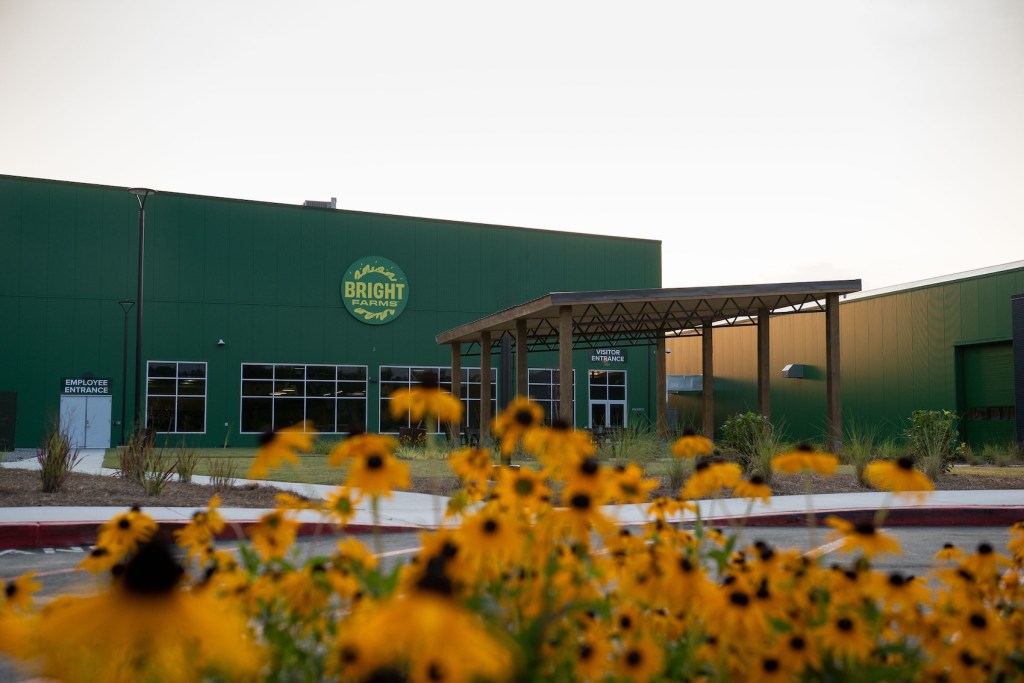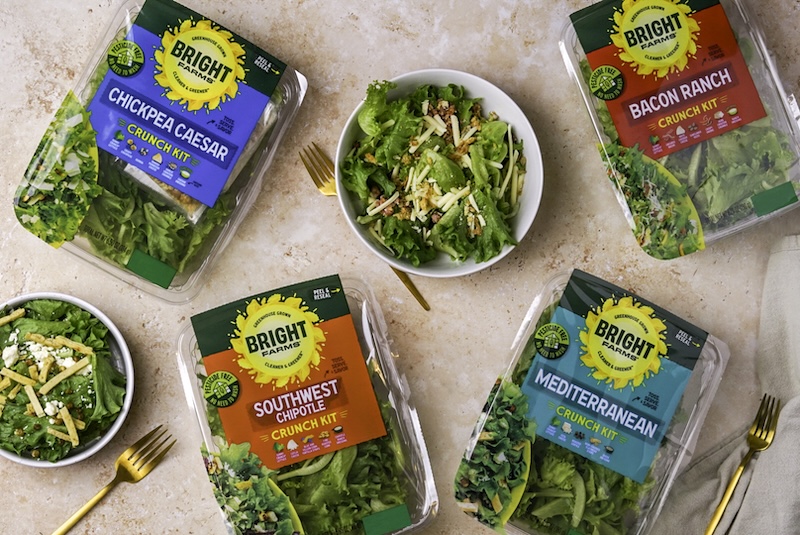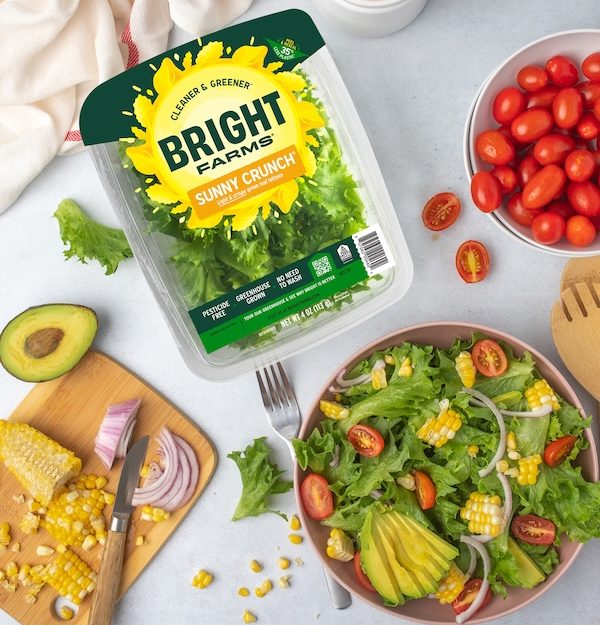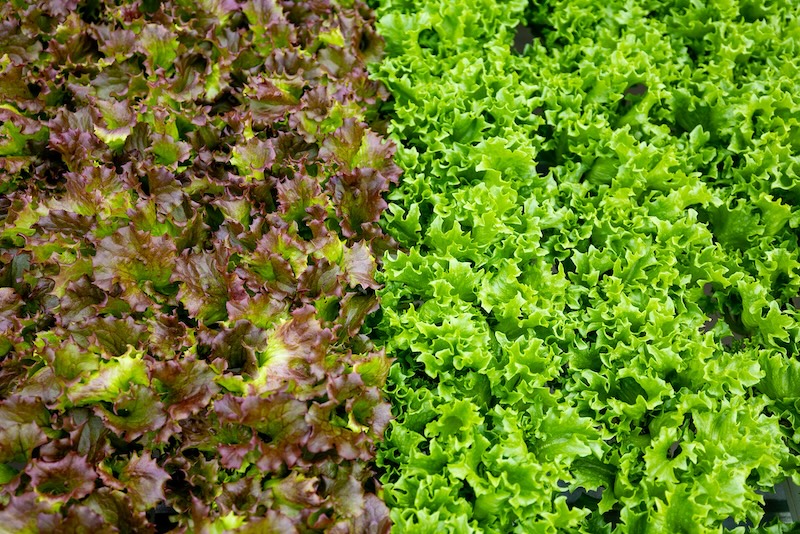In today’s produce aisles, discerning grocery shoppers are asking tougher questions: How far did this lettuce travel to get here? Will it still be good by the weekend? Is it worth the price?
These quiet calculations are reshaping buying decisions. As inflation stretches household budgets, shoppers are becoming more mindful of produce that wilts after just a few days. When leafy greens travel hundreds or even thousands of miles to reach the shelf, freshness can be harder to count on. It’s a challenge baked into long supply chains — and for today’s value-conscious shopper, that uncertainty matters.

As retailers rethink how to deliver a reliable food supply, Cox Farms, the largest greenhouse operator in North America, is increasing the year-round availability of fresh, locally grown produce across the country. Our expanding network of advanced, climate-resilient greenhouses are strategically placed close to major population centers. That means the produce grown by our two consumer brands, BrightFarms and Mucci Farms, can make it onto the shelf in as few as 24 hours from harvest.
“Consumers are looking for more value in every dollar they spend,” said Jess Soare, senior director of marketing at BrightFarms. “They can buy a bag of conventionally grown salad with the expectation that it’s only going to last a couple of days in their fridge. Or they can spend the same amount of dollars on our products, which stay crunchy and crisp and fresh for weeks at a time.”
BrightFarms, a US leader in leafy greens innovation, recently opened a new, state-of-the-art greenhouse in Macon, Georgia. This is the most technologically advanced greenhouse in the state, and it will serve as a reliable regional supply hub for fresh leafy greens and restaurant-style salad kits in the Southeastern US.
The Southeast: a fast-growing market for indoor-grown greens
Located just an hour from the Atlanta metro area and along key shipping routes, Macon was a strategic choice for BrightFarms to expand from its East Coast roots into the Southeast
“The indoor grown segment of packaged salad only makes up about 5% of the total packaged salad that is consumed in the Southeast, so this is really an opportunity for BrightFarms to bring our fresh, pesticide-free lettuces to the region.”
This facility is positioned to meet the rising demand for indoor-grown salads, which have seen a sales surge of over 50% in the South Atlantic in the past 24 weeks, Soare said. For BrightFarms, it’s a clear indicator of rising consumer demand in the region and strong validation of the Southeast’s importance as a growth market.
“The indoor grown segment of packaged salad only makes up about 5% of the total packaged salad that is consumed in the Southeast, so this is really an opportunity for BrightFarms to bring our fresh, pesticide-free lettuces to the region,” Soare said.
The strategic location of the greenhouse allows for rapid delivery in the Southeast, including Georgia, Florida, the Carolinas, Tennessee and Alabama.
This expansion marks the third new build in less than six months for BrightFarms, following the successful openings of state-of-the-art greenhouses in Lorena, Texas, and Yorkville, Illinois.
“The three regional greenhouse hubs effectively make a triangle across the US and are supplemented by BrightFarms’ legacy greenhouses that exist on the East Coast. With this setup, Cox Farms can truly offer our retailers consistency, reliability and stability of supply,” said Steve Bradley, president of Cox Farms. “No matter the season, no matter where they are located, we can get to them within a short distance.”

Fresh greens that win over shoppers
A grocery store’s reputation often starts in the produce aisle. Freshness, quality and visual appeal remain powerful drivers in how consumers decide which grocery store they go to, Soare said.
“Many of our retailers are looking to bring in households that are going to drive higher basket sizes and that are going to return to their stores at a higher frequency,” Soare said. “Produce is a key way to be able to do that.”

Unlike many packaged food and snack items, produce is one of the few categories where consumers judge the product itself — not just the label. Shoppers naturally reach for what looks like the freshest option, and that’s where greenhouse-grown produce stands out. BrightFarms’ local, non-GMO, pesticide-free leafy greens and salad kits offer consistent quality and visual appeal that earns trust at the shelf.
“Because our products are grown closer to where you live, you have a longer ‘best by’ date,” Soare said. “The product is also longer lasting in the fridge and offers more value to the consumer.”
Additionally, consumers want food that’s better for them. Registered dietitian and nationally recognized food and nutrition expert Mia Syn explained that fresh produce has a higher nutritional value, which is why locally grown options that reduce the time from farm to table are so important.
“As a dietitian, I love that indoor-grown greens like those from BrightFarms are harvested locally, helping them retain more nutrients and stay fresher longer.”
“As a dietitian, I love that indoor-grown greens like those from BrightFarms are harvested locally, helping them retain more nutrients and stay fresher longer,” Syn said. “The fresher the produce, the more nutrients it retains, and the better it tastes. That’s why I recommend locally grown options because they help maximize both flavor and nutrition.”
A reliable, consistent supply chain
Another key advantage of incorporating local, greenhouse-grown produce into the retail supply chain? Resilience.
In a world where extreme weather events are becoming more common, traditional agriculture faces growing unpredictability. These events leave retailers with little control — and empty shelves. That not only results in lost revenue but also puts shopper trust and loyalty at risk.
Greenhouse farming provides a weatherproof solution, ensuring a steady, reliable supply year-round, no matter what’s happening outside.
“Regardless of whether there’s a hailstorm or a drought, we’re still able to grow to the same conditions indoors and offer that consistency of quality product and consistency of volume,” Soar said.
The Macon greenhouse, as well as the two other new regional facilities in Texas and Illinois, have the most advanced climate-control systems, Soare said.
These hubs use Kubo’s ultra-clima technology, which maintain optimal weather conditions inside the greenhouses.

to grow its high quality, fresh and flavorful leafy greens.
Cox Farms Image
“There are thousands of sensors all around the greenhouse that can measure everything related to humidity, CO2 levels and temperature, and it uses all that information to be able to control the greenhouse,” Soare explained. “Especially in the South, in Texas and in Georgia, we’ve invested in the most state-of-the-art cooling technologies to be able to maintain what is basically a 72 degrees and sunny environment inside of the greenhouse.”
Improving food access in local communities
Improving access to fresh, nutritious food goes beyond putting products on shelves. According to Feeding America’s 2024 report on food insecurity in the US, eight out of ten high food insecurity counties are in the American South.
“The South is home to an estimated 84% of counties with food-insecurity rates in the top 10%,” the study says. These regional disparities are consistent with national data from the United States Department of Agriculture, which also show that individual food insecurity rates are highest in the South.

This is one of the reasons Cox Farms is partnering with Feeding America to help to end hunger by connecting people to food and addressing its root causes.
In the first year with this initiative, Cox Farms is on track to meet its commitment to donate three million pounds of fresh produce, including regular donations to local food banks in Georgia like Middle Georgia Community Food Bank near Macon’s new facility.
“As a company based in the South that’s committed to helping people live more prosperous lives, we believe it is critical to leverage our greenhouse technology to help address food insecurity and improve access to fresh, nutritious food,” Bradley said.
Curious how Cox Farms is future-proofing the world of produce?